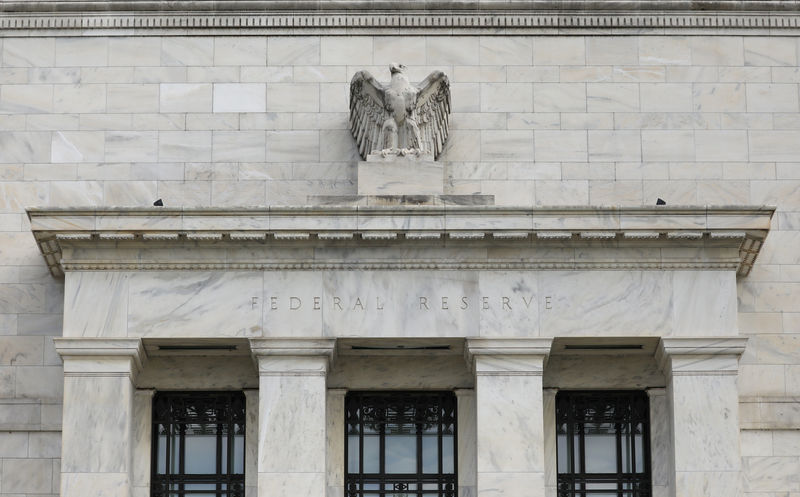Investing.com -- The Federal Reserve should not only begin a new cycle of interest rate cuts at its upcoming gathering this week, but also "front-load" those reductions, according to analysts at Alpine Macro.
In a note to clients, the analysts argued that rolling out quicker borrowing cost cuts could help offset headwinds facing income growth and protect the broader economy from a recession.
Financial markets are currently discounting at least 100 basis points in Fed cuts by the end of this year, followed by an additional 125 basis points next year. This would bring the central bank's key policy rate down to around 2.5% to 3.0% in the final months of 2025, compared to the current 23-year high range of 5.25% to 5.5%.
Alpine Macro said its analysts are now divided over how Fed officials should approach a major potential dilemma: Whether to cut more and faster, or less and slower.
Faster and deeper reductions, some of the analysts argued, may support private sector spending, which could lessen the impact of a possible softening in disposable income growth as the labor market weakens. By extension, personal consumption, a major driver of overall US growth, would then be propped up, they said.
However, other analysts also noted that the US economy may be on the "cusp of a major upswing in labor productivity growth" thanks largely to a spike in enthusiasm around artificial intelligence. Because of that, the so-called neutral rate of interest -- the level at which the economy is supported by full employment while inflation remains constant -- could be higher than initially thought, potentially bolstering the case for fewer rate cuts.
According to the CME Group's (NASDAQ:CME) closely-monitored FedWatch Tool, the odds that the Fed will kick off its easing cycle with a 50-basis point cut this week -- rather than a more traditional 25-basis point drawdown -- currently stand at 65%.
The probabilities were even heading into last weekend, but bets for a jumbo cut were bolstered by media reports suggesting that such a reduction was still an option. Former New York Fed President Bill Dudley has also argued that a bumper cut was needed because short-term interest rates are "far above" a neutral level.
